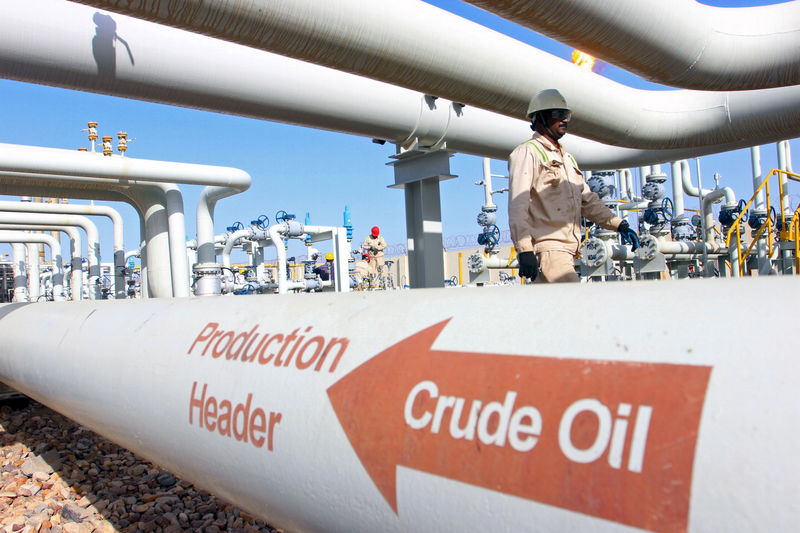Investing.com-- Oil prices retreated Friday, falling from four-month highs on profit-taking and pressure from the dollar as hotter-than-expected U.S. inflation data pushed up fears of a more hawkish Federal Reserve.
At 10:00 ET (14:00 GMT), Brent oil futures fell 0.7% to $84.84 a barrel, while West Texas Intermediate crude futures dropped 0.8% to $80.62 a barrel.
Strong dollar hits crude
Prices were pressured by a stronger dollar, which rose sharply on Thursday after producer prices followed consumer prices in coming in stronger than expected for February.
These reading, which came just days before a Fed meeting, ramped up fears that the central bank will keep interest rates higher for longer in 2024, boosting the greenback.
A strong dollar makes commodities, like crude, than are denominated in dollars more expensive for foreign buyers.
Weekly gains likely on tighter supply outlook
Still, crude prices were set to gain more than 3% this week, after earlier climbing to its highest levels since November last year, as signs of improving U.S. demand and tightening fuel markets spurred strong gains through the week.
A bigger-than-expected draw in U.S. inventories pointed to improving demand in the world’s largest fuel consumer, while the White House confirmed it was buying over 3 million barrels of oil to replenish the Strategic Petroleum Reserve.
In addition to the smaller U.S. inventories, debilitating Ukrainian attacks on a key Russian fuel refinery threatened to potentially disrupt fuel supplies in parts of Asia and Europe, presenting a tighter supply outlook for oil markets.
This, coupled with continued geopolitical disruptions in the Middle East, particularly the Israel-Hamas war and the Red Sea Houthi strikes, pointed to tighter oil markets in the coming months.
Demand hopes buoyed by OPEC, IEA forecasts
Both the Organization of Petroleum Exporting Countries and the International Energy Administration forecast strong oil demand in 2024 and 2025, in separate monthly reports released this week.
The IEA in particular hiked its demand outlook for 2024 and said that fuel supplies were likely to tighten further, as disruptions in the Middle East continued.
But the IEA also warned that slowing economic growth across the globe still presented a headwind to oil demand, especially when factoring in concerns over higher for longer interest rates in 2024.
(Ambar Warrick contributed to this article.)
